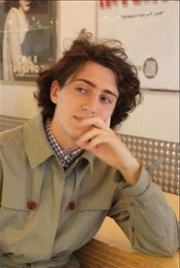Tutor HuntResources Maths Resources
Probabilistic And Computational Models Of Pathogen Genetic Diversity Within And Between Hosts
Date : 03/04/2013
Author Information

Uploaded by : Giacomo
Uploaded on : 03/04/2013
Subject : Maths
We consider a bacterial infection that presents two strains: normal
and mutant. It is our main assumption that the mutants originate
after the normal (or wild-type) cells by mutation or reinfection. Since the development of DNA fingerprinting it has been possible to evaluate accurately the size of any strain in a sample. This paper is aimed to discuss the conditional probability of the number of mutants in the host knowing the sample results.
Firstly we develop a framework for relating the sampled number of
mutant cells to the number of mutants in the host. Thus we restrict the problem to the computation of the unconditional distribution of the number of mutants, that will be called Luria-Delbruck distribution, as in literature.
Starting with a deterministic model, the case of a single mutation is discussed and analytical expressions of the Luria-Delbruck distribution are provided. The model is then expanded to an arbitrary number of mutations. The two definition of mutation that Kendall outlines are then examined and their main differences are discussed analytically and numerically.
A more general, stochastic, approach is also studied. This model
consists of a Birth-Death process related to a compound Poisson process (inspired by Lea and Coulson`s formulation). A simple formula for the distribution of the cell population under a Birth-Death process is provided. Moreover an explicit expression for the Luria Delbruck distribution, originated by the compound Poisson process, is found. To overcome the computational challenges of this expression, we develop an algorithm and use it with the software Matlab. In conclusion, the distribution of both the deterministic and the stochastic formulations are used to calculate the conditional probability we started looking for and then completing the model for the sample.
This resource was uploaded by: Giacomo
